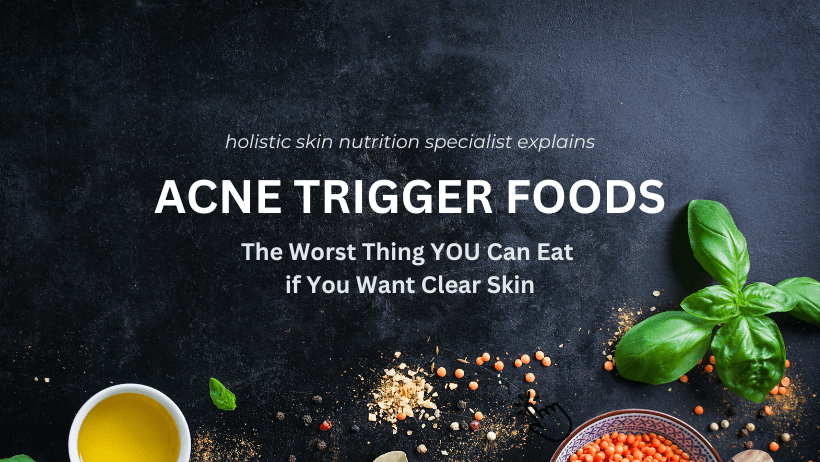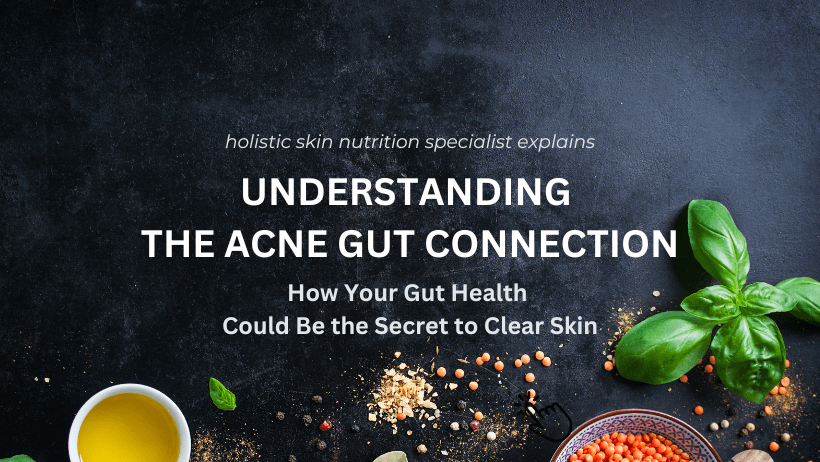Acne is a common issue that affects millions of people worldwide, and while there are many treatments available, one often overlooked factor is diet. Did you know that what you eat can have a huge impact on your skin’s health?
Today, we’re focusing on acne trigger foods and one of the worst foods for acne: skim milk. If you want clearer skin, it’s important to understand how your diet might be contributing to your breakouts.
What are Acne Trigger Foods and The Diet-Acne Connection?
Most people don’t realize how much their diet can affect their skin. Foods high in sugar or dairy can increase oil production and inflammation, leading to more frequent breakouts. One of the biggest culprits when it comes to acne-prone skin is skim milk.
Why is Skim Milk one of the acne trigger foods?
Skim milk might seem like a healthier choice because of its low-fat content, but it can actually be bad news for your skin. Unlike full-fat milk, skim milk has been linked to higher levels of hormones that can cause acne. These hormones can increase oil production in your skin, clogging your pores and leading to more breakouts.
Research has shown a clear connection between drinking skim milk and experiencing more severe acne. This is because the hormones in skim milk can get into your bloodstream and stimulate your skin’s oil glands. When these glands produce too much oil, it mixes with dead skin cells and blocks your pores, creating a perfect environment for acne-causing bacteria to thrive.
High-Glycemic Foods and Acne
Besides dairy, high-glycemic foods are another major cause of acne. High-glycemic foods cause your blood sugar to spike quickly, which leads to increased insulin production. This spike in insulin can increase the levels of insulin-like growth factor (IGF-1), which boosts oil production in the skin and makes acne worse.
High-glycemic foods include things like white bread, sugary snacks, and many breakfast cereals. To help manage acne, it’s a good idea to swap these out for low-glycemic options like whole grains, fruits, and vegetables, which don’t cause those rapid blood sugar spikes.
The Role of Omega-3 Fatty Acids
Not all fats are bad for your skin. Omega-3 fatty acids, found in foods like fish and flaxseeds, have anti-inflammatory properties that can actually help reduce acne. These healthy fats can help balance the ratio of omega-6 to omega-3 fatty acids in your diet.
This balance is important because a diet high in omega-6 fats (common in many Western diets) can increase inflammation and lead to more acne. Adding more omega-3-rich foods to your diet can help reduce this inflammation and improve your skin’s health.
You can find my first choice therapeutical omega-3 with polyphenols that help to keep the fish oil fresh and bioactive – I recommend this to my acne and inflammatory skin condition clients.
Practical Steps for Clearer Skin and Acne Trigger Foods to Avoid
-
Cut Out Skim Milk and High-Glycemic Foods: Start by removing skim milk from your diet and replacing it with alternatives like almond or oat milk. Also, reduce your intake of high-glycemic foods, choosing whole grains, fruits, and vegetables instead.
-
Add Anti-Inflammatory Foods: Incorporate more omega-3-rich foods into your meals, such as salmon, walnuts, and chia seeds. These foods can help reduce inflammation and balance hormone levels, which can help prevent breakouts.
-
Track Your Skin’s Reaction: Keep a food diary to note what you eat and how your skin reacts. This can help you identify other potential triggers and make more informed dietary choices.
Who Can Benefit from limiting Acne Trigger Foods and Doing These Changes?
Anyone who struggles with acne can benefit from these dietary adjustments. By understanding how your diet affects your skin, you can take proactive steps to reduce breakouts and achieve clearer skin.
Not only will these changes help improve your complexion, but they can also boost your overall health and well-being.
Conclusion
Getting clear skin often requires a combination of good skincare and smart dietary choices. By eliminating acne-triggering foods like skim milk and high-glycemic options and adding anti-inflammatory and low-glycemic foods to your diet, you can significantly improve your skin’s health. Remember, what you eat plays a big role in how your skin looks and feels, so choose foods that support a clear, healthy complexion.
Remember Clear & Calm Skin Starts Within!
Kaia Kardmaa
Your holistic skin nutrition specialist


